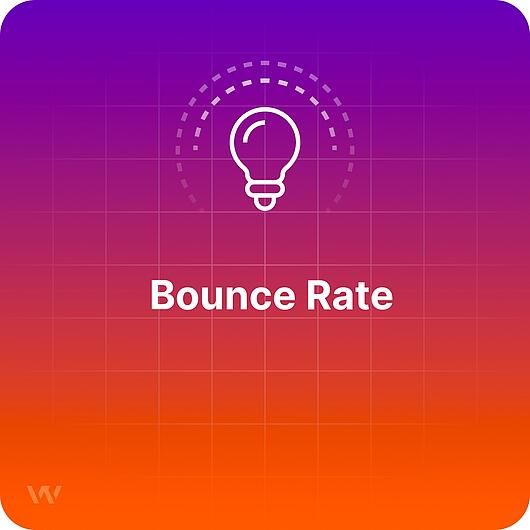- Why Us?
- Features
White Label
For SaaS Platforms & Agencies
Provide our complete analytics suite to your clients, directly within your own interface and with your/their own branding. Discover Analytics-as-a-Service and White Label Analytics. Great benefit, minimal effort.
- Pricing
- White Label
- Success Stories
- ResourcesGetting Started
Bounce Rate
TL;DR

Bounce rate is a web traffic analysis metric. It represents the percentage of website visitors who visit a single page of a site and leave without visiting any other pages of that same website.
There is no right or wrong value for bounce rate, but in the majority of cases, a lower bounce rate is preferred to a higher one.
This metric can be found in the Overview menu.
What is Bounce Rate?
One of the most common web analytics metrics, bounce rate represents the percentage of visitors who enter a site and leave without viewing any other pages within the same session. The average bounce rate differs from one industry to another and depends on the type of website, but the general rule is that the lower the bounce rate, the better. As benchmarks for e-commerce websites, bounce rates should be between 20- 45% and for B2B websites between 25-55%. Some of the factors that can lead to an increased bounce rate are slow-loading pages, low-quality content, bad user experience, and technical problems.
What is the formula for Bounce Rate?
Bounce rate is calculated by dividing the number of single-page visits by the total number of visits of the website. Although our app shows you this metric in the Overview dashboard, here is how you can calculate it for yourself:
Rb=Tv/Te
Where:
Rb = Bounce rate
Tv = Total number of visitors viewing one page only
Te = Total number of visitors to a site
Why is Bounce Rate important?
Bounce rate can dictate the success of a website by reflecting performance and effectiveness. It shows how interested visitors are in the website and it’s a number to be considered when establishing business strategies and objectives.
It’s important to know that bounce rates are not relevant for one-page websites and landing pages, as there are no other pages for the visitors to go to. News portals, dictionaries, and other one-click sites are also an exception to the rule.

